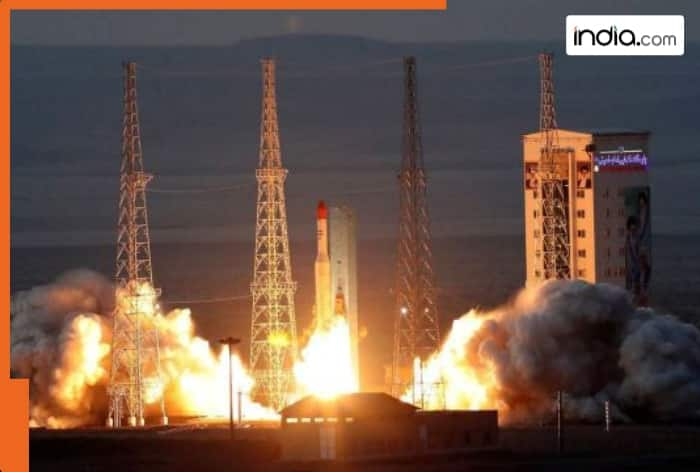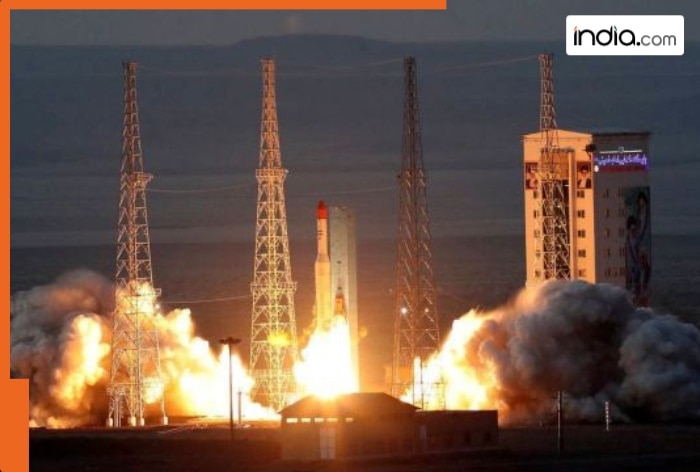This missile is built using Space Launch Vehicle technology.

(Iranian Defense Ministry via AP/File)
New Delhi: Iran has been developing new and advanced missiles and drones, making a mark for itself as one of the world’s highly compelling military systems manufacturing countries.
On Saturday, September 20, a mysterious object was seen in the skies of Tehran, which was unofficially described as a mysterious missile. On Sunday, 21 September 2025, an Iranian MP stated that the missile launch shown in a recent viral video was a successful test of an ICBM (Intercontinental Ballistic Missile). This missile is built using Space Launch Vehicle (SLV) technology; its range exceeds 10,000 km, and it can reach the US and Europe. But is this true?
What is ICBM, and what is Iran’s claim?
An ICBM is a long-range ballistic missile that can hit targets more than 5,500 km away. It flies in the air and then lands. It can carry a nuclear warhead. Iran claims that this new missile is derived from an SLV (Satellite Launch Vehicle), which was part of the space programme.
An Iranian MP stated that this was a test of their most advanced missile. Smoke trails were seen in the video, which is being claimed as evidence of a launch. However, experts have expressed scepticism. A report by the US Defence Intelligence Agency (DIA, 2025) states that Iran could develop an ICBM by 2035, if a decision is made now.
Which missiles does Iran have at present?
Currently, Iran possesses Medium-Range Ballistic Missiles (MRBMs) with a range of 2000-3000 km, such as the Khorramshahr-4 and Fatah-2, but there is no concrete evidence of an ICBM. According to the Arms Control Association 2025, Iran’s SLV programme Simorgh could be used for ICBMs, but it is still in the prototype stage. Iran has over 3000 missiles, but no ICBMs.
Short-range (SRBM): 300-1000 km, such as the Shahab-1.
Medium-range (MRBM): 1000-3000 km, such as the Khorramshahr-4.
ICBM claim: 10,000+ km, capable of reaching the US East Coast. However, the Defence Intelligence Agency (DIA) says Iran needs assistance from North Korea or others for its ICBMs.
Which countries are at risk?
Middle East: Israel (1500 km), Saudi Arabia (1200 km), UAE (1000 km)—these are already targets.
Europe: France, Germany, UK (3000-4000 km).
Asia: India (2500 km, but farther from ICBMs), Pakistan (1500 km).
USA: East Coast (New York, Washington) within a range of 10,000 km.
Iran’s focus is on Israel and the US. In the 2025 Israel-Iran conflict, Iran fired 500 missiles. ICBMs threaten US bases (Qatar, Bahrain). However, Iran’s SLV programme is an ICBM test bed, violating UN sanctions.
Iran’s ICBM claim raises concerns, but evidence is limited. If true, it poses a significant threat to the United States, Europe, and Israel.
HIGHLIGHTS
The US and Israel are in shock as Iran has tested an ICBM with a range of over 10,000 km
This Iranian ICBM can reach the US East Coast, the American mainland.
Iran has made a mark for itself as one of the world’s highly compelling military systems manufacturing countries.
On Saturday, September 20, a mysterious object was seen in the skies of Tehran.
An ICBM is a long-range ballistic missile that can hit targets more than 5,500 km away. It flies in the air and then lands. It can carry a nuclear warhead. Iran claims that this new missile is derived from an SLV (Satellite Launch Vehicle), which was part of the space programme.
